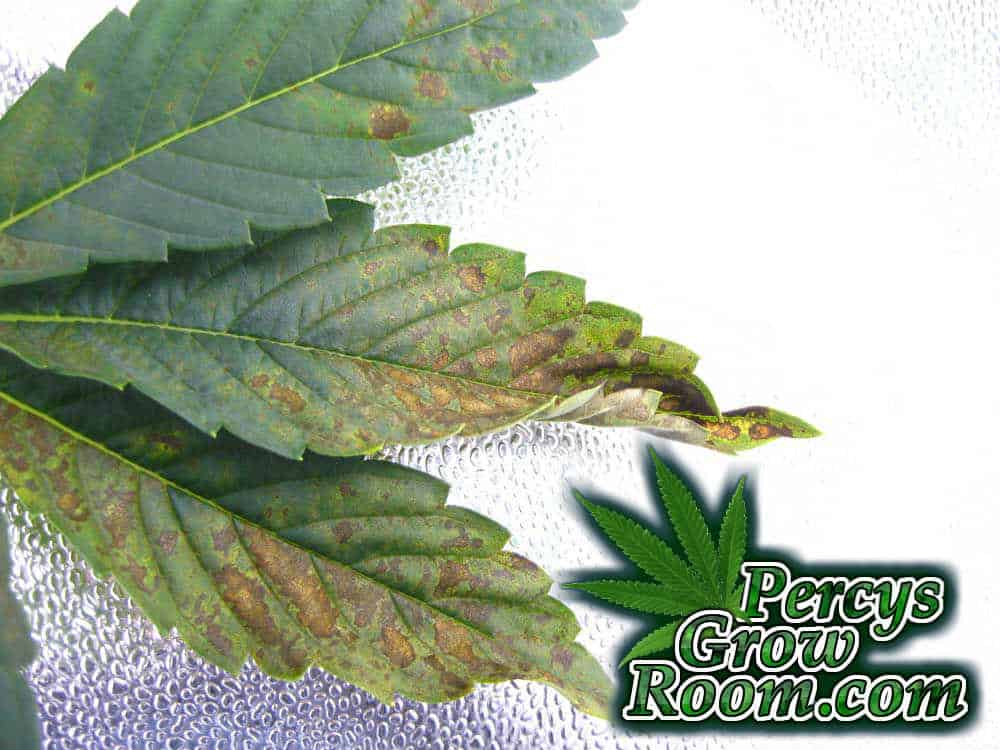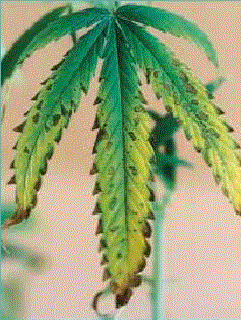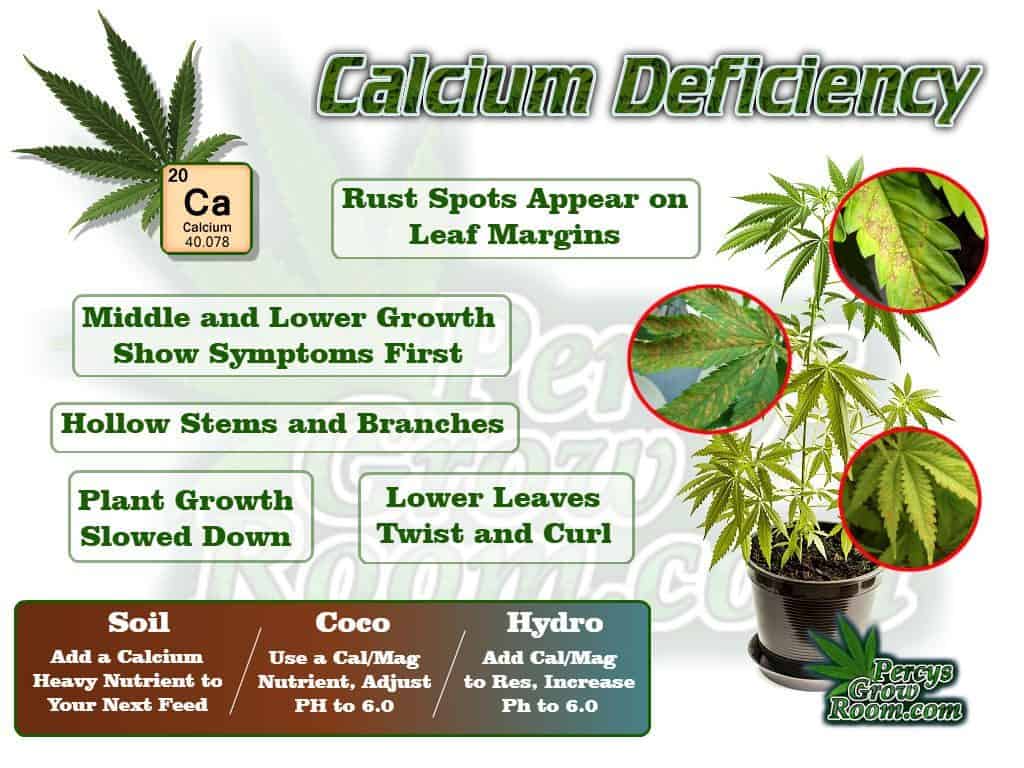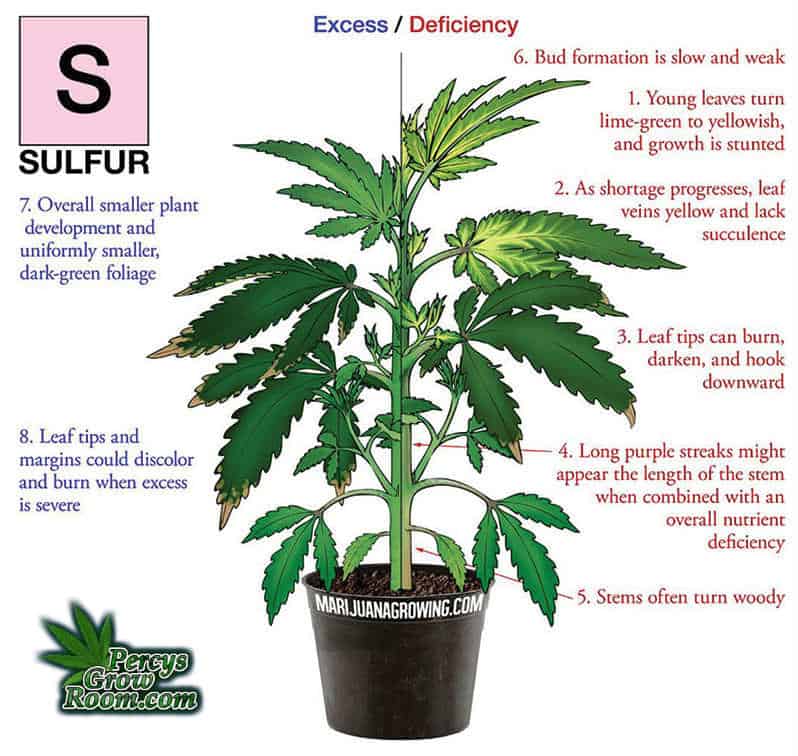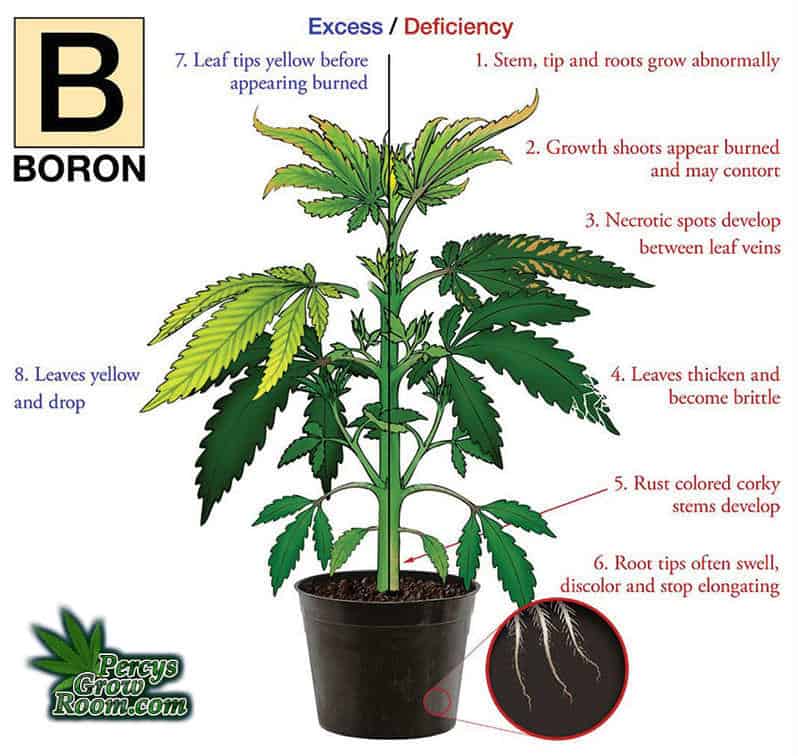Evergreengardener
Agronomist,
Original content from

 percysgrowroom.com
percysgrowroom.com
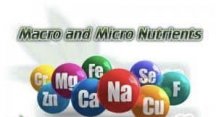
@Thomasbruh @Big Terps
And anyone else that may need this. In no way did I write all this up I just sourced it and brought it here for anyone in need!
Macro and Micro Nutrients in a cannabis plant are the elements that are important to plant growth. The three major macronutrients are:
During their vegetative stage, cannabis plants need more “N” and “P”, for energy and growth of leaves and stems. In their flowering-stage, more “P” and “K” will be needed, to build bigger flowers and provide the plants with lots of energy.
Along macronutrients, plants also require micronutrients. They will be used in smaller doses than NPK, but they are still just as important to healthy plant growth.
Some of these micronutrients are Calcium (Ca), Magnesium (Mg), Sulfur (S), Manganese (Mn), Boron (B), Zinc (Zn), and Copper (Cu).
List of Macro and Micro Nutrients in a Cannabis Plant
Below is a list of macronutrients and micronutrients. along with information on how it is used by a cannabis plant. There will also be descriptions of deficiencies and excess for each nutrient.
Macronutrient: Nitrogen
Symbol: N
Uses in Cannabis Growing: Nitrogen promotes photosynthesis, and is directly responsible for the production of chlorophyll. It stimulates leaf and stem growth, and aids the overall size and vigor of the plants.
Nitrogen Deficiency: A nitrogen-deficiency can be recognized by reduced growth-rates and yellowing of the leaves. This will start with the older/lower leaves).
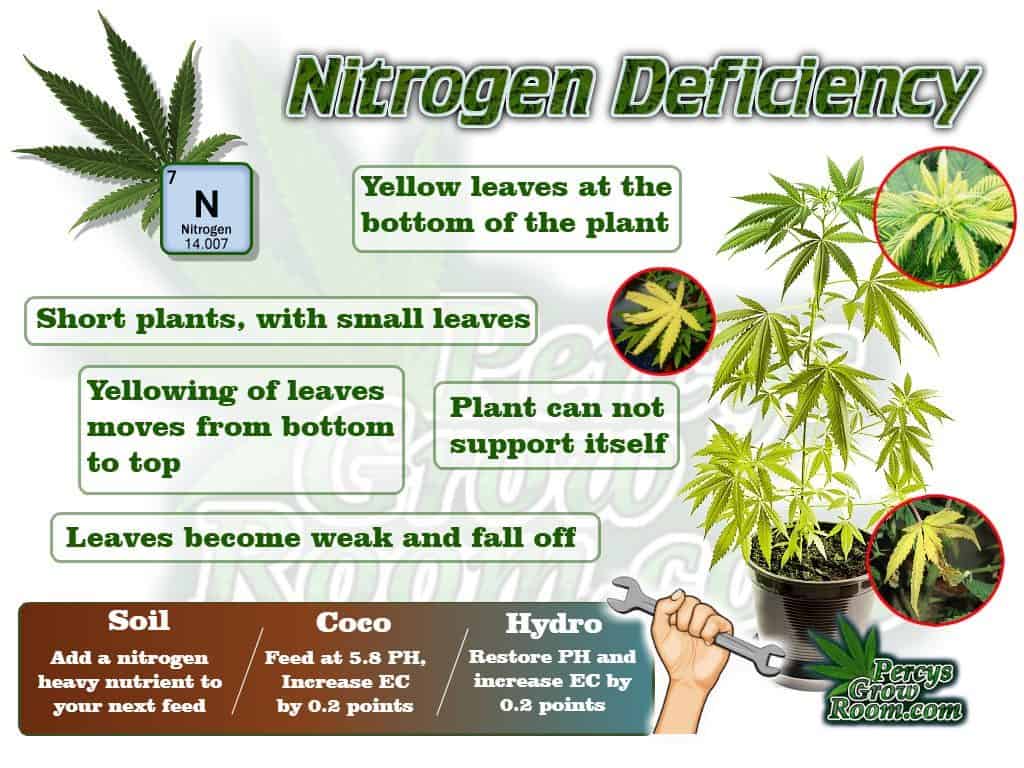
Nitrogen Excess can have lasting health effect on your marijuana plant. You must be able to recognise the symptoms of a nitrogen toxicity, to ensure the best harvest possible.
Nitrogen is an important element of plant growth. Your cannabis plant will take it from the medium, and use to to build stems, branches, and leaves. It is also a major component in photosynthesis. Without it, your plant will no be able to make chlorophyll, which means, it will not eat.
Even though nitrogen is an important element, too much of it can cause problems with weed plants. If these problems are not fixed before the flowering cycle, your plant will struggle to build flowers, or the flowers will be airy and less dense.
Effects of Nitrogen Excess in a Cannabis Plant
With an excess of nitrogen the plant wants to work hard building foliage, and stems, as this is what the plant uses it for. The more nitrogen it has, the more it will try and grow leaves and stems, rather than flowers. Your plant will grow quickly, but it will be weak and spindly.
Because your plant is building so much foliage, it will be very leafy, and the stems will stretch, and become weak. The stems will snap easily, and they will be more prone to bugs and diseases.
What Nitrogen Excess Looks Like in a Weed Plant

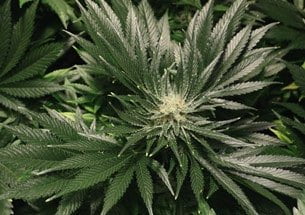 Nitrogen Excess
Nitrogen Excess
How to fix a nitrogen excess will depend on the medium you are growing in. It can be as simple as flushing you medium, or, if growing outdoors, you may have to plant crops that will eat a lot of nitrogen. This will help remove some from the soil.
Nitrogen Excess in Coco & Hydro
Flushing your medium, with plain, PH’d water, is always a good way to reduce the amount of any nutrient in your medium.
Once you have flushed, or removed your old reservoir, feed your plants again, at lower EC. This will lighten them up, to a healthier shade of green, within a week.
If you dont have an EC meter, and youre growing in hydro or coco, you will need one!
Nitrogen Toxicity in Soils
It will be harder to removed any element in soils than it would in hydro or coco, as the drainage isn’t so good and you can risk overwatering your cannabis plants. It is best to do one big flush, to remove as much as possible from the medium. After the flush, let the soil dry out until the pot is light, before watering again.
Once the soil is dry, continue to water your plants, with just water! They will eat the nitrogen that is stored in their plant matter. Your plant will lighten up within a few days, to a week, dependent on how bad the toxicity is.

Cannabis Forum, Percys Grow Room, A Cannabis Growers Forum
Percys Grow Room, The Cannabis Forum. Learn how to grow your own cannabis. Join our cannabis growers forum, and start growing today!
 percysgrowroom.com
percysgrowroom.com

@Thomasbruh @Big Terps
And anyone else that may need this. In no way did I write all this up I just sourced it and brought it here for anyone in need!
Macro and Micro Nutrients in a cannabis plant are the elements that are important to plant growth. The three major macronutrients are:
- Nitrogen (“N”)
- Phosphorus (“P”)
- Potassium (“K”).
During their vegetative stage, cannabis plants need more “N” and “P”, for energy and growth of leaves and stems. In their flowering-stage, more “P” and “K” will be needed, to build bigger flowers and provide the plants with lots of energy.
Along macronutrients, plants also require micronutrients. They will be used in smaller doses than NPK, but they are still just as important to healthy plant growth.
Some of these micronutrients are Calcium (Ca), Magnesium (Mg), Sulfur (S), Manganese (Mn), Boron (B), Zinc (Zn), and Copper (Cu).
List of Macro and Micro Nutrients in a Cannabis Plant
Below is a list of macronutrients and micronutrients. along with information on how it is used by a cannabis plant. There will also be descriptions of deficiencies and excess for each nutrient.
Macronutrient: Nitrogen
Symbol: N
Uses in Cannabis Growing: Nitrogen promotes photosynthesis, and is directly responsible for the production of chlorophyll. It stimulates leaf and stem growth, and aids the overall size and vigor of the plants.
Nitrogen Deficiency: A nitrogen-deficiency can be recognized by reduced growth-rates and yellowing of the leaves. This will start with the older/lower leaves).

Nitrogen Excess can have lasting health effect on your marijuana plant. You must be able to recognise the symptoms of a nitrogen toxicity, to ensure the best harvest possible.
Nitrogen is an important element of plant growth. Your cannabis plant will take it from the medium, and use to to build stems, branches, and leaves. It is also a major component in photosynthesis. Without it, your plant will no be able to make chlorophyll, which means, it will not eat.
Even though nitrogen is an important element, too much of it can cause problems with weed plants. If these problems are not fixed before the flowering cycle, your plant will struggle to build flowers, or the flowers will be airy and less dense.
Effects of Nitrogen Excess in a Cannabis Plant
With an excess of nitrogen the plant wants to work hard building foliage, and stems, as this is what the plant uses it for. The more nitrogen it has, the more it will try and grow leaves and stems, rather than flowers. Your plant will grow quickly, but it will be weak and spindly.
Because your plant is building so much foliage, it will be very leafy, and the stems will stretch, and become weak. The stems will snap easily, and they will be more prone to bugs and diseases.
What Nitrogen Excess Looks Like in a Weed Plant

- Thick Dark Green Leaves
- Leaves will “Claw” under
- Very Bushy Plant
- Buds will not be dense
- Can leave harvest smelling like grass

How to fix a nitrogen excess will depend on the medium you are growing in. It can be as simple as flushing you medium, or, if growing outdoors, you may have to plant crops that will eat a lot of nitrogen. This will help remove some from the soil.
Nitrogen Excess in Coco & Hydro
Flushing your medium, with plain, PH’d water, is always a good way to reduce the amount of any nutrient in your medium.
Once you have flushed, or removed your old reservoir, feed your plants again, at lower EC. This will lighten them up, to a healthier shade of green, within a week.
If you dont have an EC meter, and youre growing in hydro or coco, you will need one!
Nitrogen Toxicity in Soils
It will be harder to removed any element in soils than it would in hydro or coco, as the drainage isn’t so good and you can risk overwatering your cannabis plants. It is best to do one big flush, to remove as much as possible from the medium. After the flush, let the soil dry out until the pot is light, before watering again.
Once the soil is dry, continue to water your plants, with just water! They will eat the nitrogen that is stored in their plant matter. Your plant will lighten up within a few days, to a week, dependent on how bad the toxicity is.



